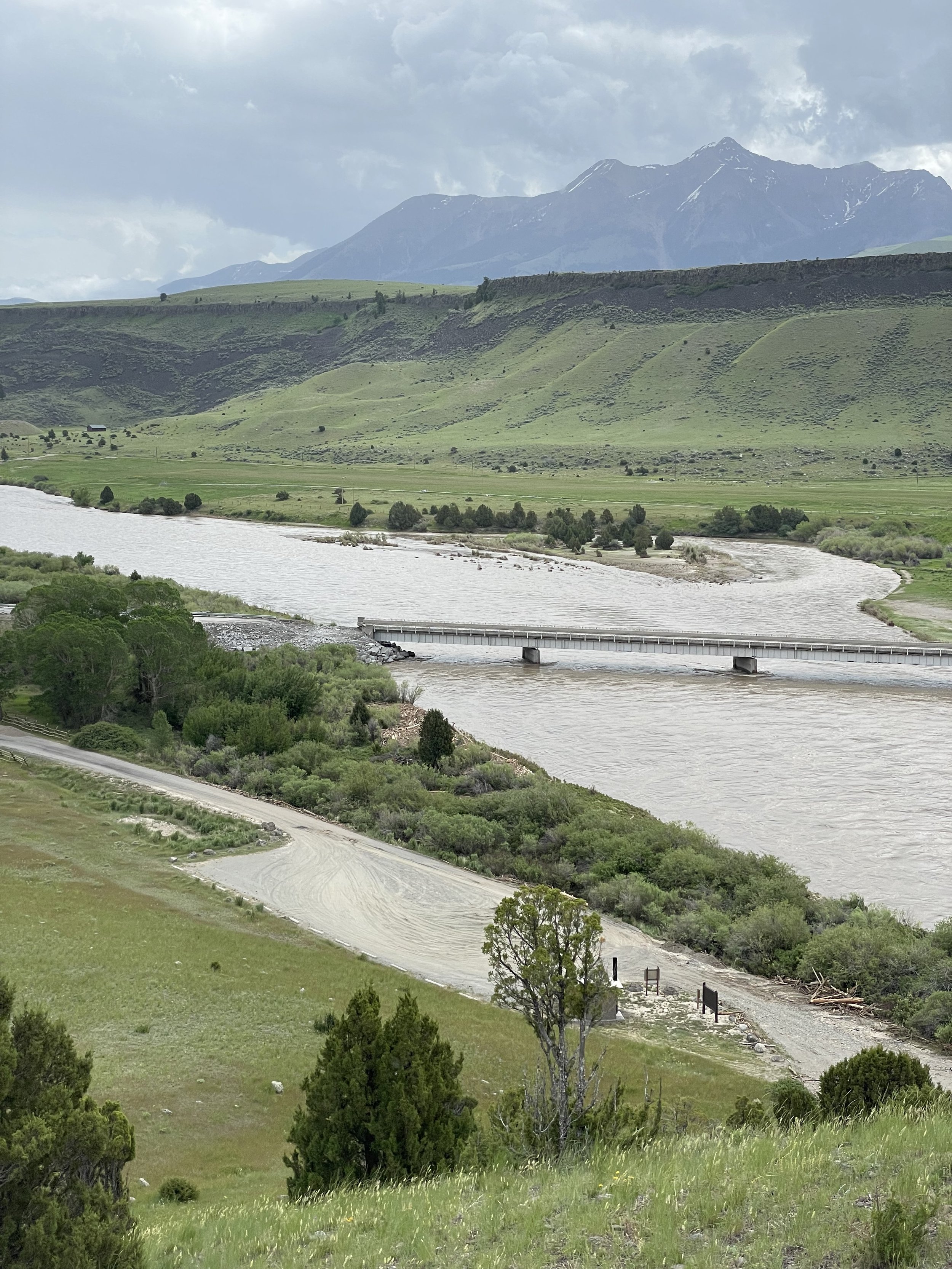The Day After. The river’s epic flow carried huge amounts of timber and other debris downstream, creating massive drift piles as the river receded to “normal” flood levels (photo by Brian Yablonski).
A fist of water
Whitney Tilt, AFFTA Fisheries Fund
As an active member of the Upper Yellowstone Watershed Group and project manager of an ongoing recreational use study on the Upper Yellowstone, I’ve spent some time on the Upper Yellowstone.
The events of June 13th were indeed extraordinary. Just how extraordinary is depicted on the following two hydrographs. The first graph maps the river’s vertical rise. The gage height climbed more than six feet in the matter of 24 hours — not a gradual rise of water but a fist of water charging down the river, clobbering all before it.
As far as the sheer volume of water, the two largest previously recorded flood events, in 1918 and back-to-back in 1996 and 1997, discharged 32,000-32,200 cubic feet per second (cfs). The recorded discharge on the afternoon of June 13, 2022, registered 49,400 cfs! The peak was short-lived, but unbelievable powerful, leaving long lasting changes that we can only begin to assess.
Opportunities to give back
Members of the angling community, including AFFTA Fisheries Fund. Yellow Dog Community and Conservation Fund, and the Fishing and Outfitters Association of Montana (FOAM), are raising funds and organizing volunteers to assist Montana Fish, Wildlife & Parks, USDA Forest Service, and the Bureau of Land Management in getting the river access sites cleaned up, made safe, and open for business.
100 percent of donated funds will go to clean-up/restoration efforts
After the initial cleanup, the next steps will be to make the river better: for the fisheries, for the recreational use, for the people who make the watershed their home.
To this end we are pleased to support the Give Back to the Yellowstone program, spearheaded by Montana Freshwater Partners. All donations will be dedicated towards priority on-the-ground projects implemented collaboratively by local organizations working in partnership with the Upper Yellowstone Watershed Group.
Learnings from previous floods provide a few important lessons for us all, whether we live near the Yellowstone, recreation on it, or want to conserve its natural resources.
First and foremost. Putting property and lives back together will take time, patience, and persistence. While eager to stabilize banks, rebuild, and protect, experience shows that processes like river channel response will be ongoing and difficult to assess in the short-term.
With or without our permission, nature likes change, and flood events benefit river systems in myriad ways, from flushing out small-grain sediments to create new spawning areas to re-seeding and reinvigorating willow and cottonwood growth.
Point of Rock Fish Access Site, June 15, 2022, with the damaged Highway 89 bridge behind. June 30, 2022: the bridge has been repaired, the access site is open (but still in need of clean-up, and the river has created changed its meanderings in ways still to be explored. (photo by Brian Yablonski)





